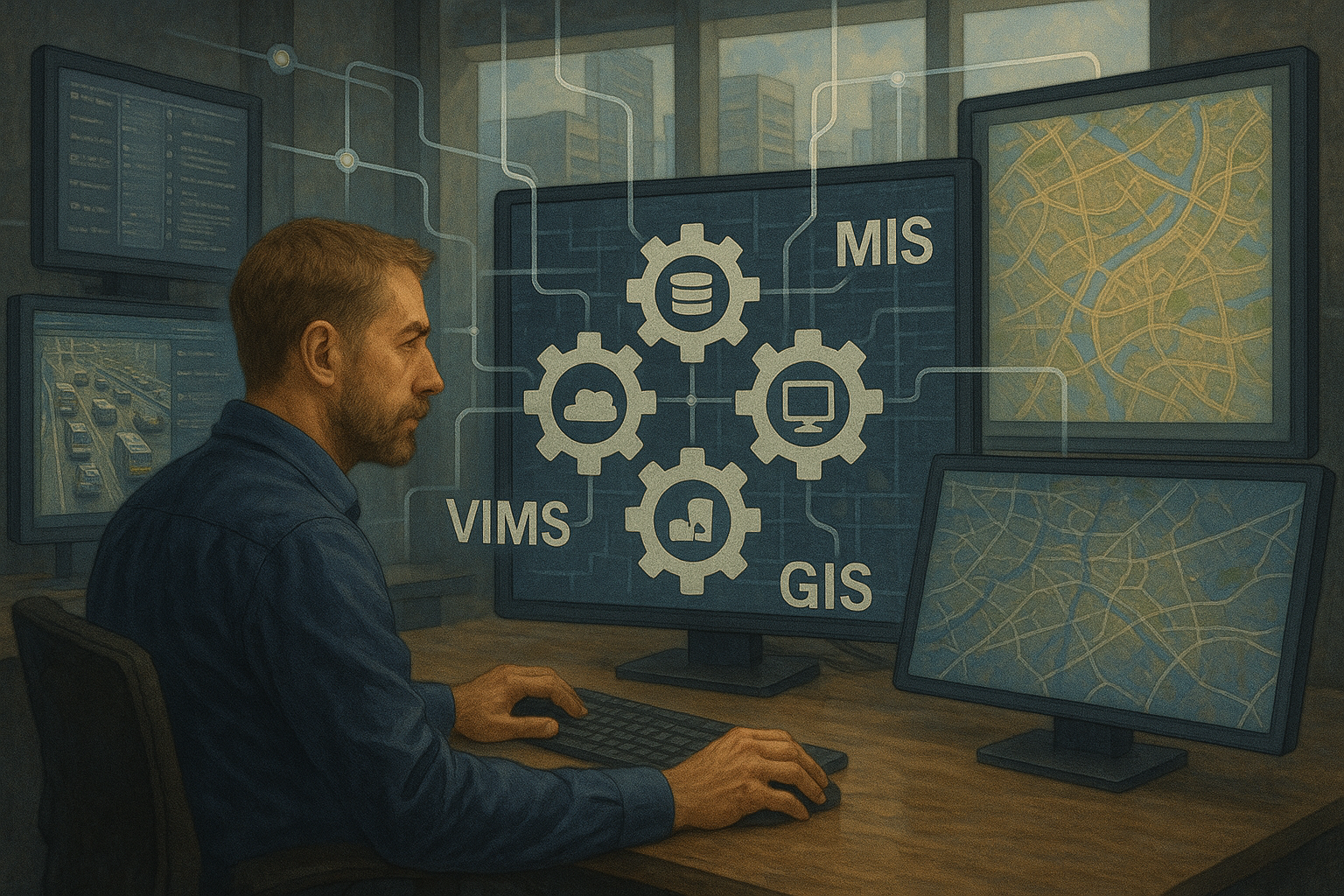Interoperability in Motion: How System Integration Defines the Future of ITMS

Cities are growing smarter day by day, and so are the infrastructures that put them on the move. Intelligent Transport Management Systems (ITMS) have emerged as the heartbeat of today's urban transport — monitoring vehicles, routing, scheduling optimisation, and safety upgrades.
But then came new technologies — from Vehicle Intelligent Monitoring Systems (VIMS) to Management Information Systems (MIS), Emergency Management Systems (EMS), and Geographic Information Systems (GIS) — and the challenge is no longer how to produce the tools. It's how to connect them.
The destiny of ITMS is in one great vision: interoperability — the seamless integration of all transport systems into a single, cohesive ecosystem.
The Challenge of Fragmented Systems
For generations, transport authorities and city operators have employed dedicated systems to execute specific tasks. VIMS tracks vehicles, EMS handles incidents, MIS handles operations and data, and GIS shows routes and networks. Each system functions effectively within its own realm, but when cut off from one another, vital information is lost. A failure detected by VIMS need not translate into the MIS. A traffic slowdown selected by GIS need not trigger an immediate alert to motorists.
This segmentation creates silos — independent pools of information that hinder the functionality of the whole system. The result? Delays, inefficiencies, and chances for greater coordination are lost.
Building a Single Transport Ecosystem
Interoperability flips this narrative on its head. It converts disparate intelligence into collaborative intelligence — where all the systems communicate, interact, and coordinate with one another in real time. When VIMS, MIS, EMS, and GIS are made to work together, they no longer remain as distinct tools. When combined, they form an intelligent network that can think, learn, and react dynamically.
For example, when a vehicle reports a fault on VIMS, maintenance is automatically planned by MIS within a fraction of a second. The EMS reroutes other vehicles to maintain service continuity, and the GIS refreshes passenger-facing display route data.
All the systems react to the same incident — automatically and in real-time. That's interoperability in action.
The Power of Integration
An end-to-end integrated ITMS environment transforms the manner in which cities manage mobility. It unifies data, operations, and decision-making into a single digital canopy. Integration makes real-time coordination possible, allowing operators to see the complete network from a single dashboard. If incidents occur, information flows freely across departments — everyone is working on the same version of the truth.
It also powers data-driven decisions. With MIS drawing on the insights from VIMS and GIS, city officials can plan more effectively, allocate resources better, and respond more rapidly.
And passengers have benefits immediately. Itinerary updates are on time, emergency response is quicker, and there is transparent and reliable communication.
Technology Behind Interoperability
True interoperability is built upon a foundation of API connectivity, IoT integration, and AI automation. APIs are bridges that enable systems to talk to each other, regardless of their structure. IoT devices collect real-time data from the road, vehicle, and sensors and dump a continuous flow of information into the network.
AI becomes the decision-maker after that — deconstructing information, identifying patterns, and predicting what will happen before it happens. All these technologies blend to form an evolving digital environment where systems interact harmoniously with one another, not so different from organs in a living organism.
Arenasoftwares: Driving the Connected Future
At Arenasoftwares, we believe the strength of an ITMS lies not in how many systems it has but in how well those systems work together. Our integrated solutions combine VIMS, MIS, EMS, GIS, and IoT platforms into one synchronised ecosystem. Each module is designed to share data effortlessly, enabling cities to manage mobility from a single intelligent interface. This unified approach ensures that every vehicle, depot, and command centre operates with perfect coordination.
We don’t just build systems — we build connections that make cities more efficient, safer, and responsive.
The Road Ahead
The future of ITMS is modular, connected, and adaptive. Cities will no longer invest in individual systems; they’ll invest in ecosystems. Interoperability will define how well a city can evolve — integrating new technologies, expanding operations, and improving citizen experience without disruption. When every part of a transport system — from buses to sensors — speaks the same digital language, efficiency is no longer a goal. It becomes the default.
That’s the future Arenasoftwares is helping shape — where intelligent systems don’t just coexist but work together as one.
